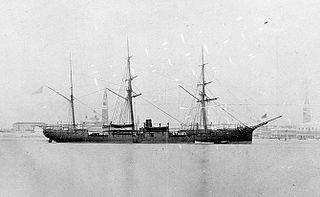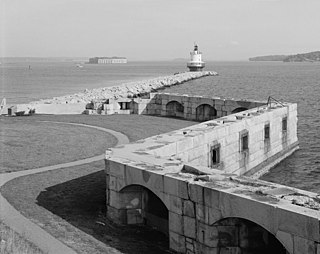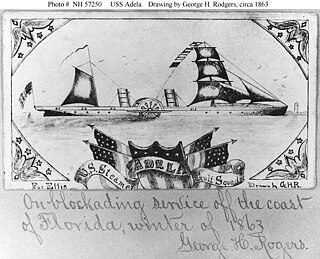Background
Around June 24, a Confederate raider named the Tacony, commanded by Lieutenant Charles Read, CSN, was being pursued by the Union Navy. To thwart their pursuers, at about 2 AM on June 25, the Confederates captured the Archer, a Maine fishing schooner out of Southport. After transferring their supplies and cargo onto Archer, the Confederates set fire to Tacony, hoping the Union Navy would believe the ship was destroyed.
On June 26, a Confederate raiding party entered the harbor at Portland late in the evening, sailing past Portland Head Light. The rebels disguised themselves as fishermen; they planned to try to destroy the area's commercial shipping capability, and then to escape out of the harbor.
Battle
When the raiders left the port area on June 27, they proceeded to the federal wharf. Having the advantage of surprise, the crew seized a cutter belonging to the Revenue Service, the USRC Caleb Cushing (named for a Massachusetts congressman, United States Attorney General and Minister to Spain). Their original intent was to seize the side wheel steamer Chesapeake, but its boilers were cold. As they would lose too much time in getting the steam up, they took Cushing. They escaped and sailed out to sea.
News spread of the Confederate actions and the Army garrison at Fort Preble in nearby South Portland was alerted to the rebel intrusion. The Confederates had been observed by several persons while taking over the cutter, and public fury was aroused. Thirty soldiers from Fort Preble were assigned to pursue the raiders; they took a six-pound field piece and a 12-pound howitzer. Accompanied by about 100 civilian volunteers, the soldiers commandeered the steamer Forest City, a side-wheel excursion ship, and the Chesapeake, whose steam was finally up. All of the civilians on board were issued muskets to defend against the Confederates.
Forest City, the faster ship, was the first to catch up to Cushing and Archer. Cushing opened fire on Forest City when it had come within the 2 mi (3.2 km) range. The captain of Forest City was afraid to pursue any further. Cushing, being a revenue cutter, had two secret compartments hidden in the captain's stateroom. Confederate Lieutenant Read had not discovered the cache of powder and ammunition stored there. If he had, the outcome could have been very different.
Chesapeake, which had left port sometime after Forest City with Portland's Mayor Jacob McLellan in command, finally caught up and continued on toward Cushing. The wind was beginning to blow against the Confederate sailors and the steamers soon caught sight of Cushing. Read, the Confederate lieutenant, ordered Cushing torched; its munitions exploded after the ship was abandoned by her twenty-four crewmen, who escaped in lifeboats. They surrendered to Mayor McLellan and were held as prisoners of war at Fort Preble. Archer was also soon captured, and all the rebels were returned to Portland.

Charles William Read, known commonly as "Savez", was an officer in the antebellum United States Navy and then in the Confederate Navy during the American Civil War. He was nicknamed the "Seawolf of the Confederacy" for his exploits and daring.

The United States Revenue Cutter Service was established by an act of Congress on 4 August 1790 as the Revenue-Marine upon the recommendation of Secretary of the Treasury Alexander Hamilton to serve as an armed customs enforcement service. As time passed, the service gradually gained missions either voluntarily or by legislation, including those of a military nature. It was generally referred to as the Revenue-Marine until 31 July 1894, when it was officially renamed the Revenue Cutter Service. The Revenue Cutter Service operated under the authority of the U.S. Department of the Treasury. On 28 January 1915, the service was merged by an act of Congress with the United States Life-Saving Service to form the United States Coast Guard.

George Henry Preble was an American naval officer and writer, notable for his history of the flag of the United States and for taking the first photograph of the Fort McHenry flag that inspired the U.S. national anthem, "The Star-Spangled Banner".

The second USS Ticonderoga was a 2526-ton Lackawanna-class screw sloop-of-war laid down by the New York Navy Yard in 1861; launched on 16 October 1862; sponsored by Miss Katherine Heaton Offley; and commissioned at New York on 12 May 1863, Commodore J. L. Lardner in command.

CSS Florida was a sloop-of-war in the service of the Confederate States Navy. She served as a commerce raider during the American Civil War before being sunk in 1864.

Harriet Lane was a revenue cutter of the United States Revenue Cutter Service and, on the outbreak of the American Civil War, a ship of the United States Navy and later Confederate States Navy. The craft was named after the niece of senator and later United States President, James Buchanan; during his presidency, she acted as First Lady. The cutter was christened and entered the water for the Revenue Service in 1859 out of New York City, and saw action during the Civil War at Fort Sumter, New Orleans, Galveston, Texas, and Virginia Point. The Confederates captured her in 1863, whereupon she was converted to mercantile service. Union forces recaptured her at the end of war. The U.S. Navy declared her unfit for service and sold her. New owners out of Philadelphia renamed her Elliot Ritchie. Her crew abandoned her at sea in 1881.

Cushing Island, or Cushing's Island, is a privately owned island in Casco Bay in the U.S. state of Maine. Part of the city of Portland, roughly 45 families live there seasonally.

Fort Preble was a military fort in South Portland, Maine, United States, built in 1808 and progressively added to through 1906. The fort was active during all major wars from the War of 1812 through World War II. The fort was deactivated in 1950. It is now on the campus of Southern Maine Community College.

USS Agawam was a double-ended, side-wheel gunboat of the United States Navy that served during the American Civil War. She measured 974 tons, with powerful rifled guns and a very fast speed of 11 kn. She served the Union Navy in the Union blockade of the rivers and other waterways of the Confederate States of America.

CSS Archer was originally a fishing schooner captured by the Confederate cruiser CSS Tacony during the American Civil War and converted into a Confederate cruiser for commerce raiding.
USS Dai Ching was a steam gunboat in commissioned into service in the United States Navy in 1863. She served in the Union Navy during the American Civil War until her loss in 1865.

USS Howquah was a screw steamer purchased by the Union Navy in Boston from G. W. Upton on 17 June 1863, for action against Confederate commerce raider CSS Tacony which was then preying upon Northern merchantmen during what Professor Richard S. West has called "the most brilliant daredevil cruise of the war."
USS Iron Age was a steamer acquired by the Union Navy during the American Civil War. She was used by the Navy to patrol navigable waterways of the Confederacy to prevent the Confederates from trading with other countries.

USS Adela was a steamer captured by the Union Navy during the American Civil War. She was used by the Union Navy as a gunboat in support of the Union Navy blockade of Confederate waterways.

USRC Levi Woodbury was a Pawtuxet-class screw steam revenue cutter built for the United States Revenue Cutter Service during the American Civil War. Built in 1863–64, she became one of the longest-serving revenue cutters in the Service's history, and was the oldest active-duty ship in U.S. government service by the end of her 51-year career.

As a fervently abolitionist and strongly Republican state, Maine contributed a higher proportion of its citizens to the Union armies than any other, as well as supplying money, equipment and stores. No land battles were fought in Maine. The only episode was the Battle of Portland Harbor (1863) that saw a Confederate raiding party thwarted in its attempt to capture a revenue cutter.

The Great Lakes Patrol was carried out by American naval forces, beginning in 1844, mainly to suppress criminal activity and to protect the maritime border with Canada. A small force of United States Navy, Coast Guard, and Revenue Service ships served in the Great Lakes throughout these operations. Through the decades, they were involved in several incidents with pirates and rebels.

The Harbor Defenses of Portland was a United States Army Coast Artillery Corps harbor defense command. It coordinated the coast defenses of Portland, Maine, the mouth of the Kennebec River, and surrounding areas from 1895 to 1950, beginning with the Endicott program. These included both coast artillery forts and underwater minefields. The command originated circa 1895 as the Portland Artillery District, was renamed Coast Defenses of Portland in 1913, and again renamed Harbor Defenses of Portland in 1925.

















